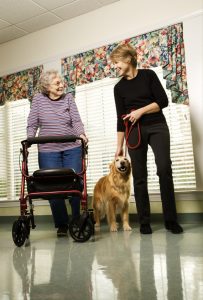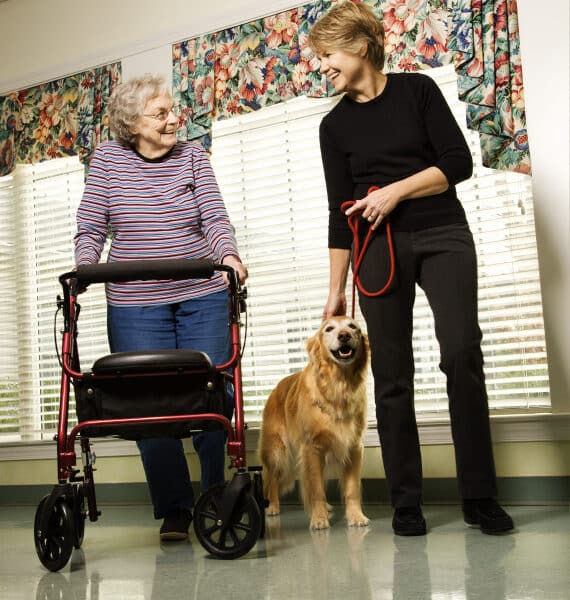 What are zoonoses?
What are zoonoses?
Zoonoses are diseases that can be transmitted from animals to humans. The HSE reported that there are ‘approximately 40 potential zoonoses in the UK and approximately 300,000 people in a variety of occupations are potentially exposed’. The healthcare worker can potentially come into contact with such diseases.
The benefits of pet visitation
Animals can benefit residents of care homes and users of other healthcare services by providing comfort and a sense of wellbeing. However, the potential risks of introducing animals into these environments, including the exacerbation of allergies, must be taken into consideration.
In most healthcare settings the entry of an animal into the building is prohibited due to infection control policies. However, where pets are allowed access, infection control strategies need to be in place, and policies regarding the entry of animals to the premises must be developed, covering animal-assisted activities and personal pet visitation.
Common infections and their sources
The risks associated with domesticated animals, such as cats and dogs, demonstrate that infection control is required. The waste produced by dogs, such as faeces, urine and vomit, can potentially contain Toxocariasis and Leptospirosis. The same waste produced by cats can also contain Toxocariasis. Ringworm can be contracted from significant skin contact with a dog.
The role of animals in the spread of bacteria is not well understood. It is difficult to find many studies on infection control and animals. The HSE provides guidance on zoonoses and working with animals. It is important that the healthcare service provider develops a risk assessment if they are allowing pets onto the premises. They will need to develop standard infection prevention and control policies to help protect service users and healthcare workers.
Groups at increased risk
There are specific groups of people who are at increased risk of contracting zoonoses, and who may suffer more severe symptoms. These include:
- Infants and young children
This age group should be closely supervised when in contact with animals.
- Pregnant women and unborn babies
Pregnant women may be more susceptible to certain diseases, with some zoonotic diseases potentially affecting the unborn child, causing birth defects or miscarriage.
- Immuno-compromised adults or children
- Older persons
Infection control policy guidelines
The healthcare facility should develop an infection control policy detailing the precautions and controls to implement when allowing an animal visit. A designated person should consider approval for the visit and then ensure the safe management of the animal within the facility. Once access is granted, consideration should be given to the areas in which the animal is allowed, its feeding and cleaning, and the location in which it can rest or sleep.
The infection control policy should cover the following:
- Animals must have received a health evaluation through a licensed veterinarian.
- A risk assessment must be completed for all animal visits.
- Permitted animal access should be logged, such as visits to a named person and instructions as to whether an animal is allowed to stay in the building.
- All personnel and service users who will come into contact with animals must be given information and instruction on hand hygiene, safe animal handling and how to manage zoonotic risks.
- All personnel and service users who come into contact with an animal must wash their hands before eating, drinking, smoking, using the telephone, taking medication etc.
- All personnel and service users who will come into contact with an animal must be advised to avoid hand-mouth or hand-eye contact and not to put pens/pencils in mouths.
- They must be advised to wash hands with soap and running water:
after touching animals, their enclosures or food containers
after being licked or bitten by an animal
after any contact with soil, bedding, urine, faeces or animal feed in an animal contact area. - The facility should maintain a first-aid kit in case of scratching or biting.
- All personnel and service users who will come into contact with an animal must cover all new and existing cuts and grazes with waterproof dressings and/or gloves.
- The service provider should ensure that they carry out regular cleaning and disinfection, and dispose of all animal waste safely.
- Animals must be monitored and managed by the service to ensure that service users and employees with whom they come into contact remain safe.
QCS has policies on infection control to meet your CQC requirements.
References
HSE – Zoonoses
HSE – Advisory Committee on Dangerous Pathogens, Infection at work: Controlling the risks





